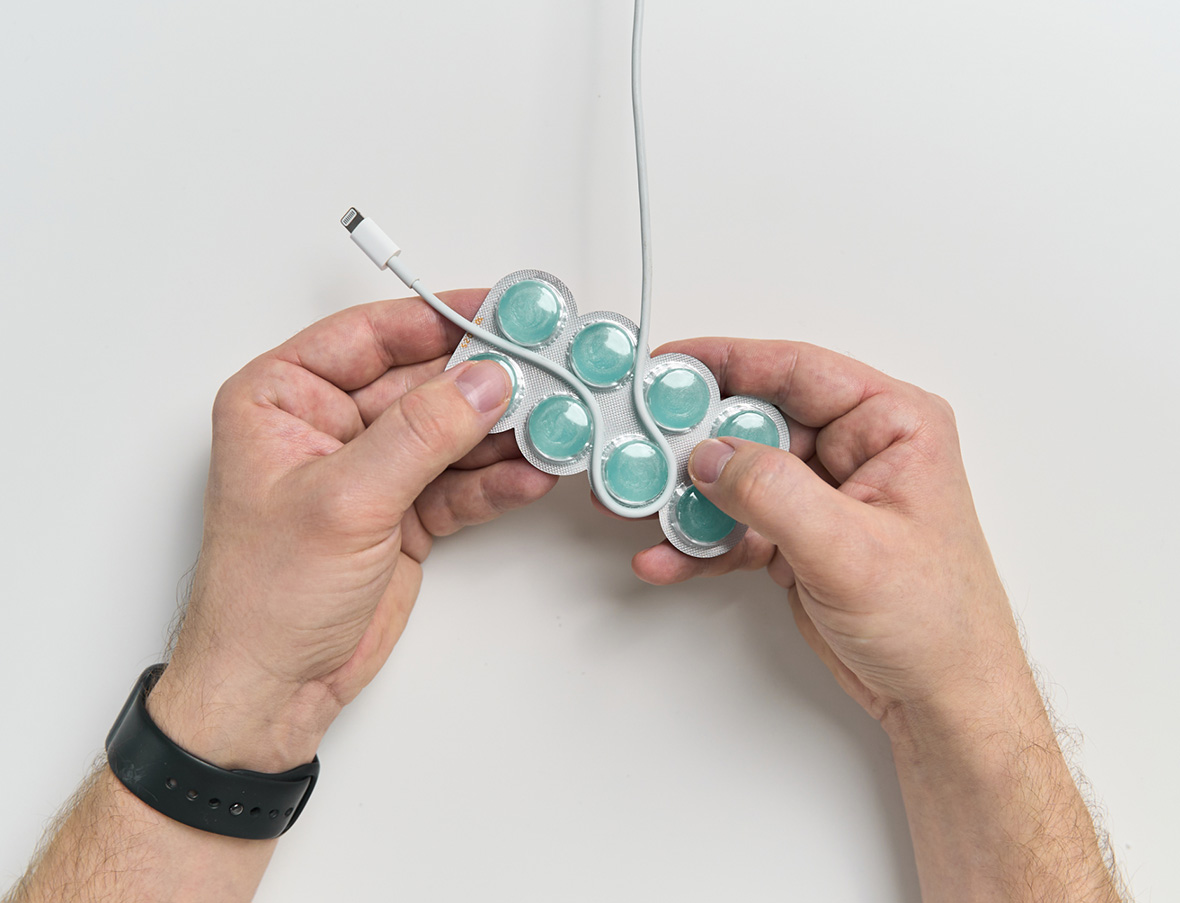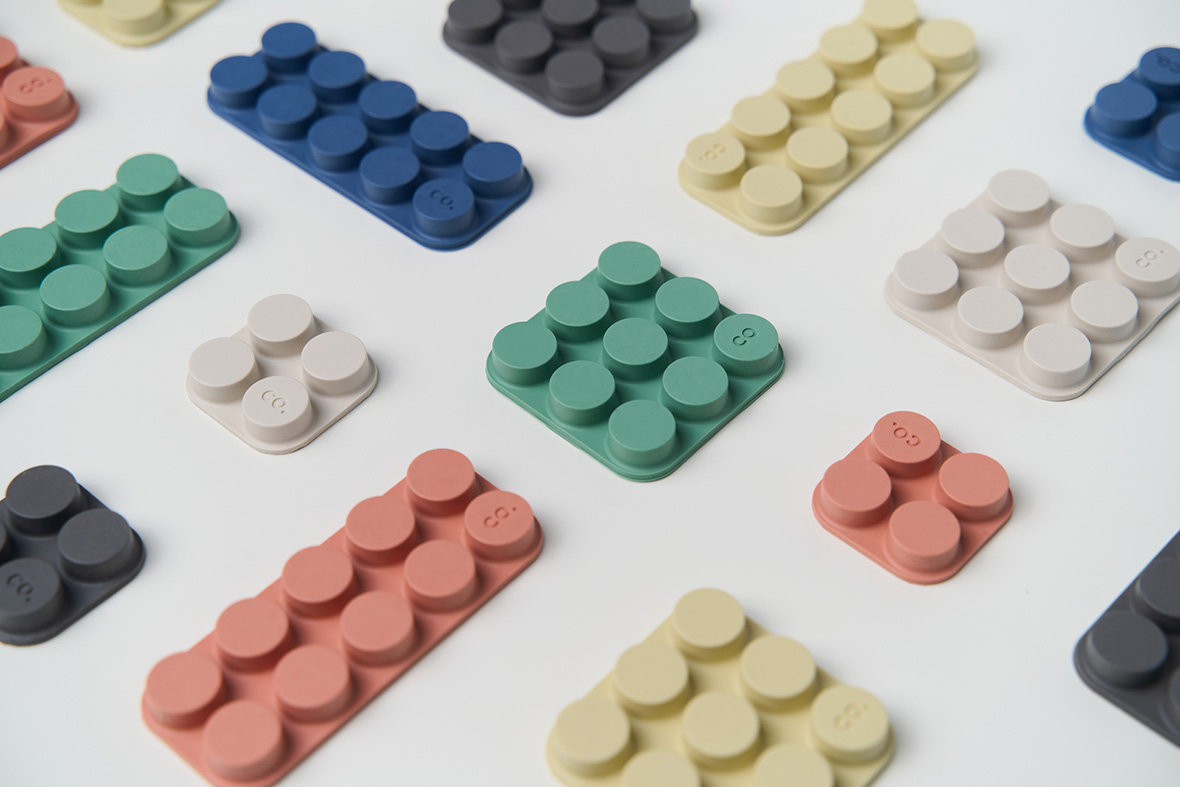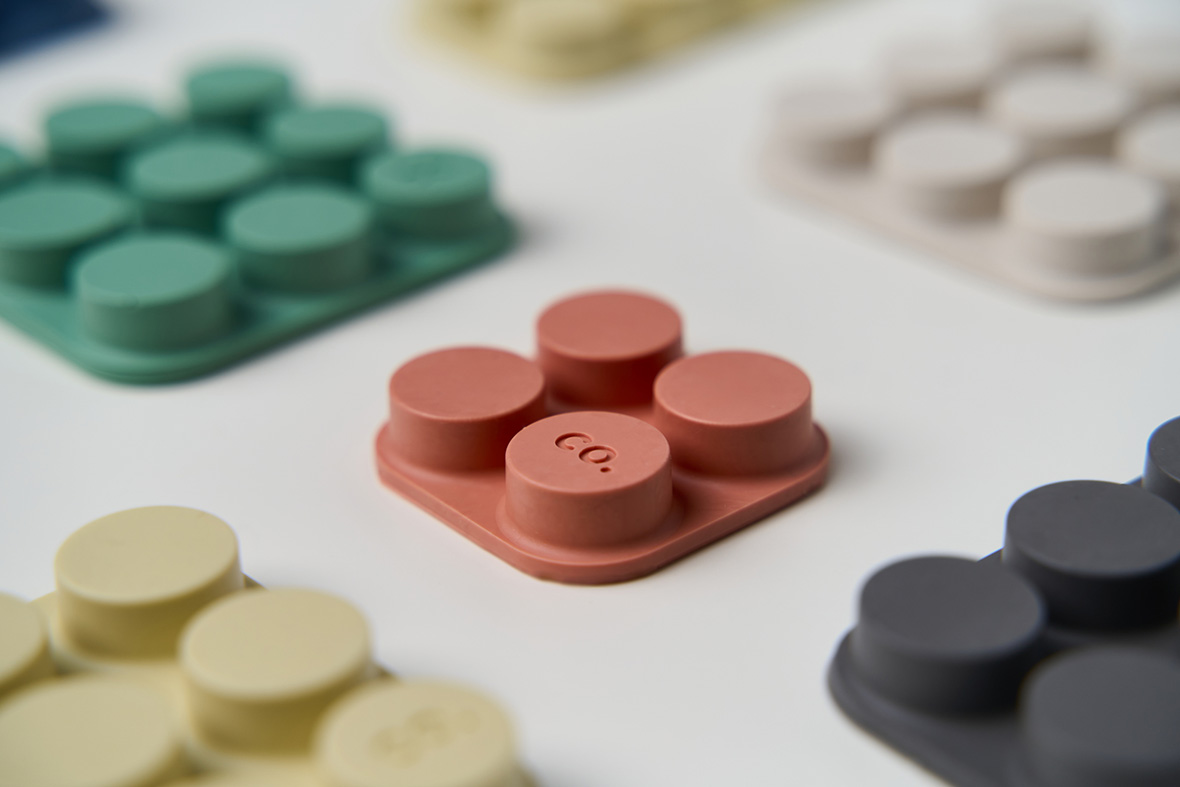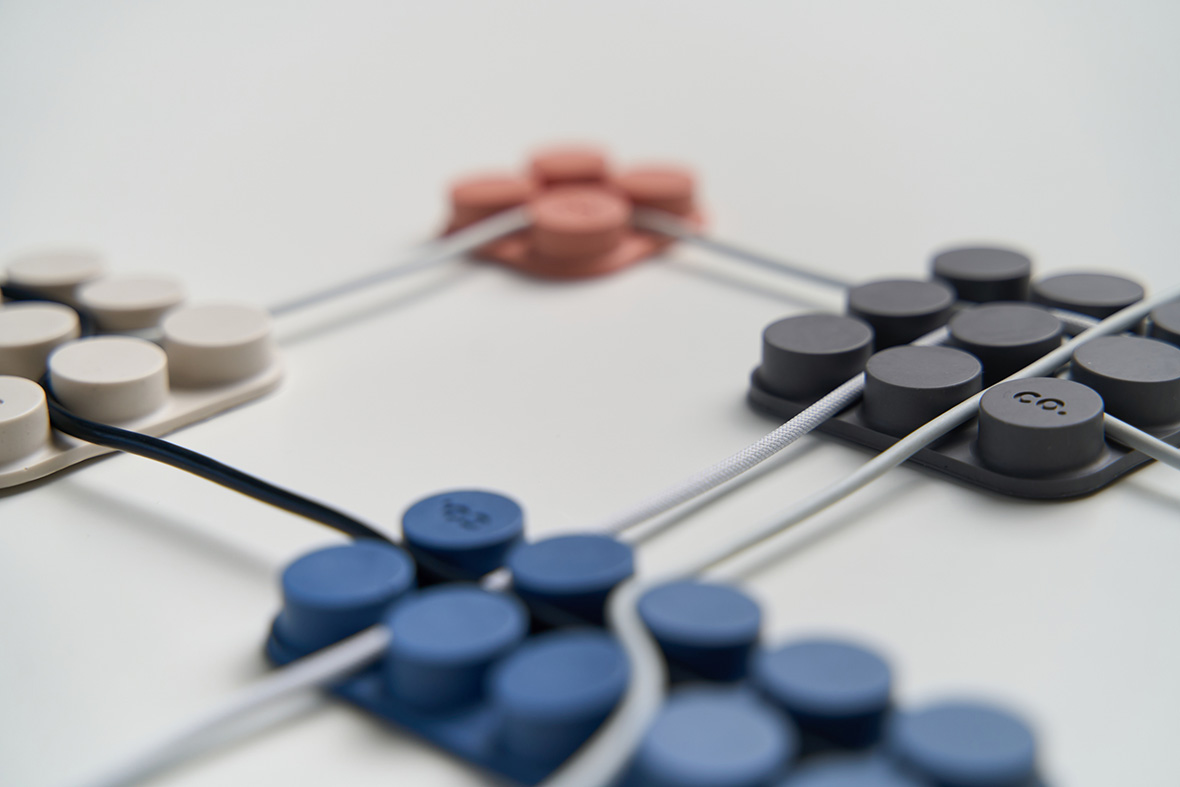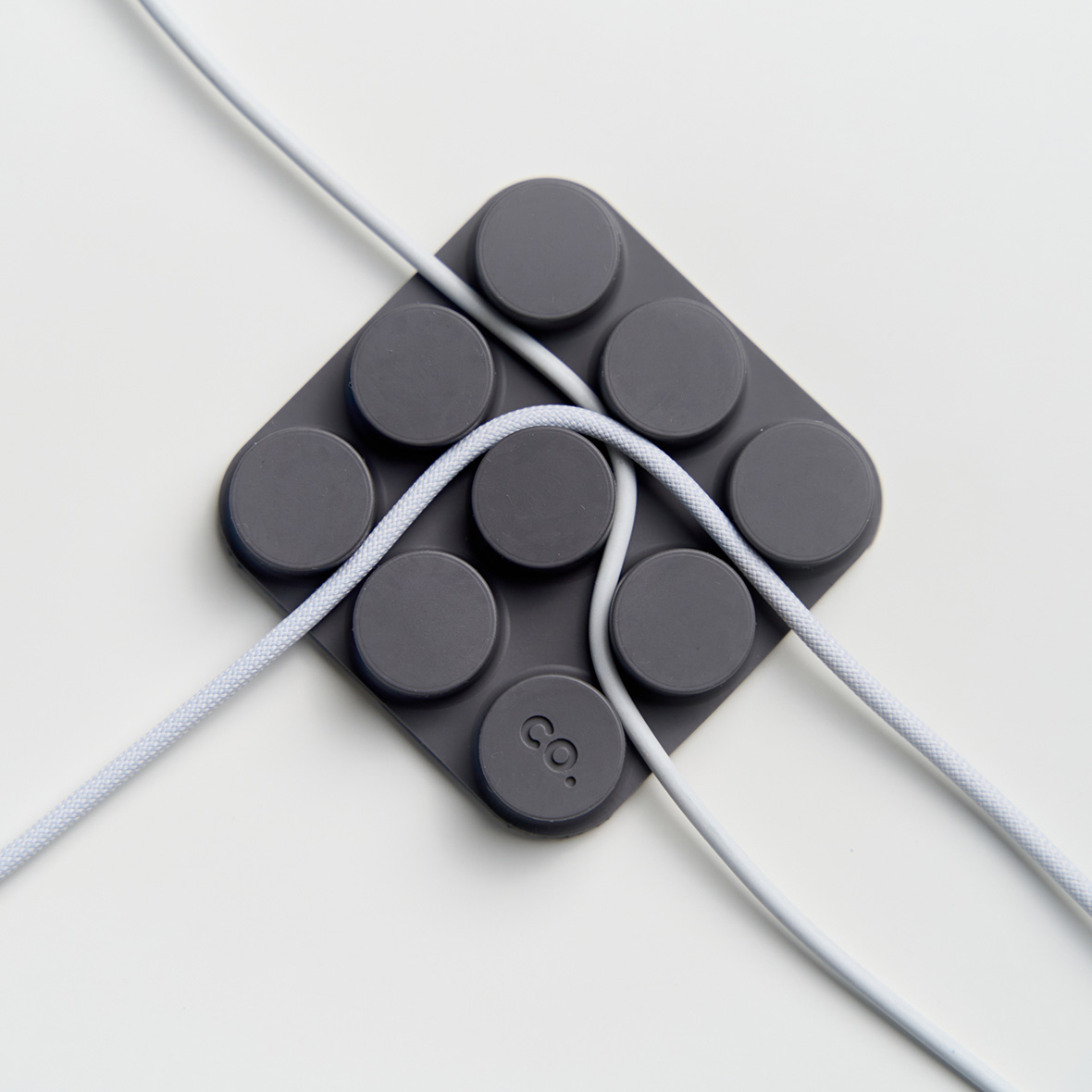Inspiration can strike anywhere, any time. Take for example designer Adam Miklosi, who observed how his phone charger cable had wound and wrapped around a blister pack of sore throat lozenges while in his backpack in a manner that almost seemed as if they were intentionally designed for the function. Thus was born the co. cable organizer.
Inspired by the extruded cylindrical grid of his lozenge blister pack, the freelance Budapest-based industrial designer immediately turned to Shapr3D and Vray to help move beyond ideation and into drafting shapes that in quick time would become 3D models. Miklosi would use these 3D models then to create various high-quality FDM molds reproduced with pleased accuracy.
“While designing the co. I checked various use cases and decided to make three different type of cable holder: mini (2×2), medium (3×3) and large (2×5),” explains Miklosi. “The ability to bend cords and cables around the cylinders is what keeps the typically loose peripherals hold steady, and you can even place two cables on top of each other in the same row. The cable holders are designed to stick to the surface using micro-suction tape.”
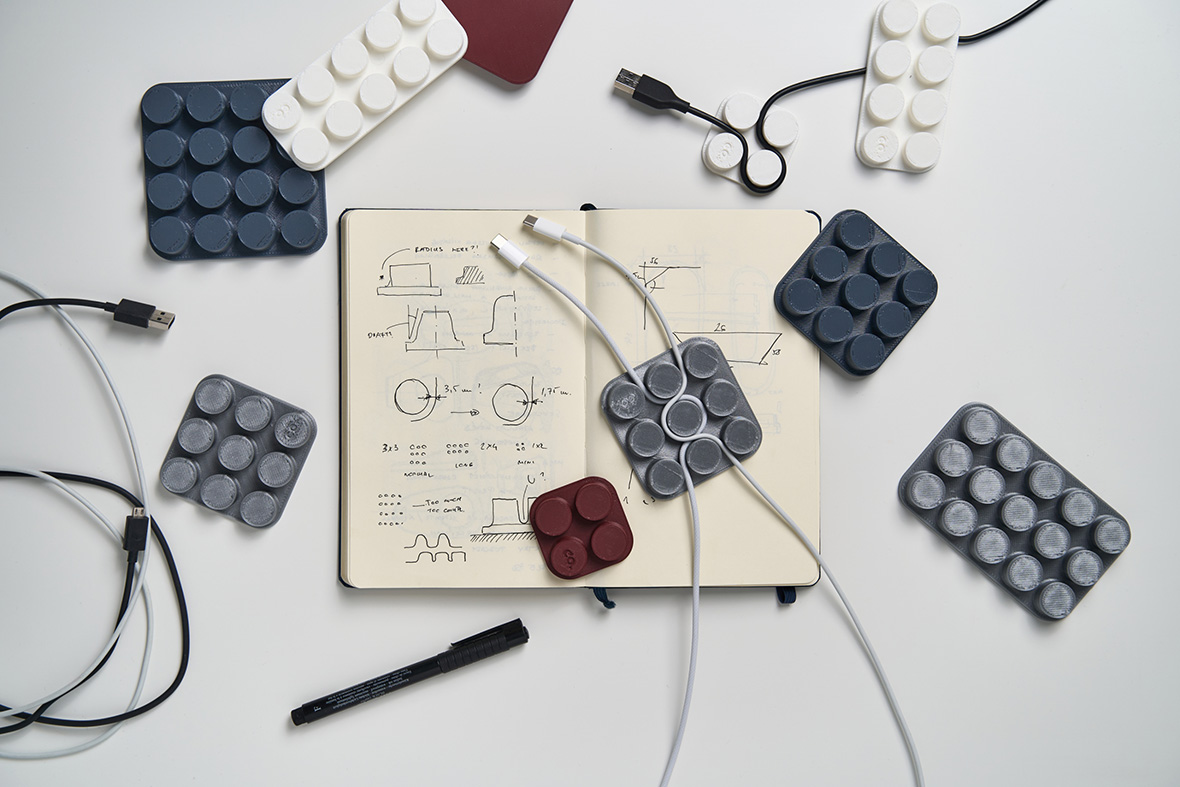
“I initially imagined the cable holder would be from a kind of rubber material I decided to cast silicone samples,” says Adam Miklosi. “The mold making was fun and informative… sometimes less fun. I started with plaster molds then 3D printed FDM and silicone variation and CNC milled aluminum as last and final.”
Miklosi notes he devised the size of the cylinders based upon the bending tolerance of USB-C type cables, devising a size maximized to hold the cables in place without damaging them.
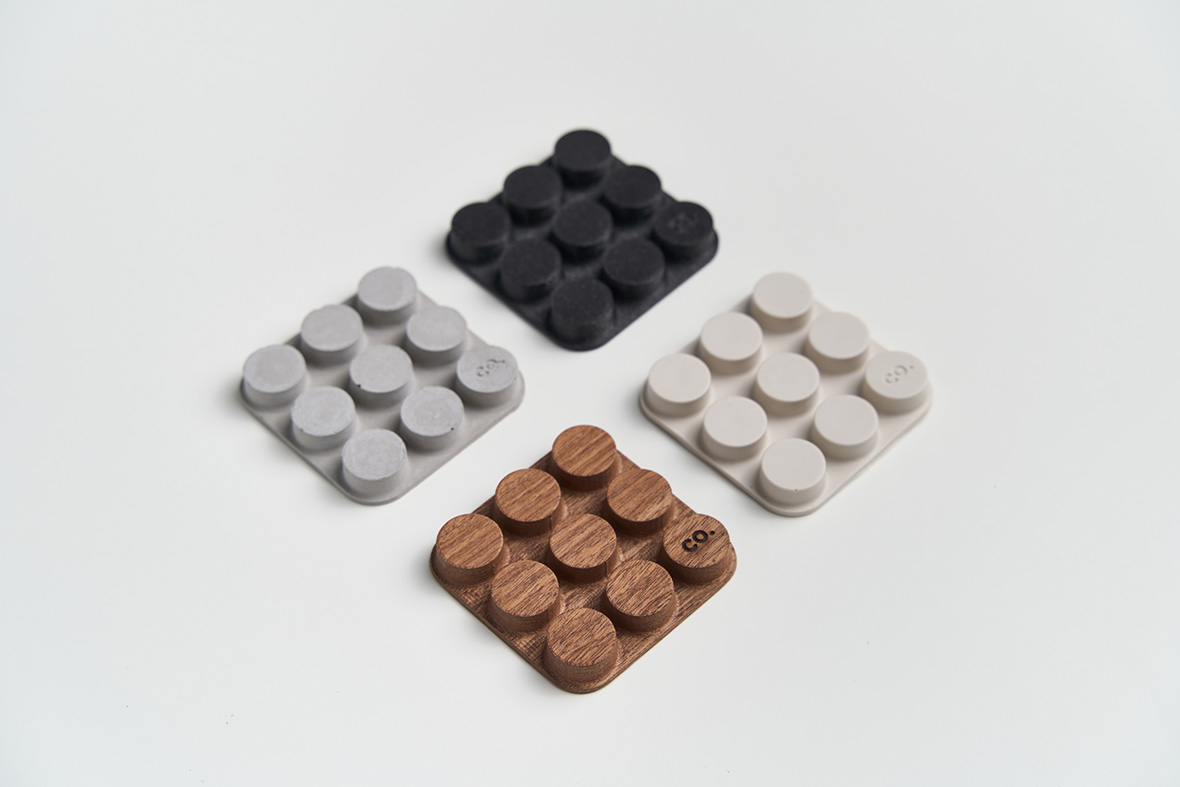
The cable organizer is imagined to be offered in not only an assortment of colors, but also materials, including concrete, teak wood, and a high-quality print with the stunning Prusament galaxy black PLA.
Miklosi’s portfolio is filled with similarly inspired and clever solutions, including the Red Dot 2021 awarded Nousu lamp collection and 2019 awarded Slē. But he remembers co. cable organizer as an especially fun exercise, both because of the simplicity behind the design, and also because in the process of designing the home office accessory he found the opportunity to “learn about mold casting and the importance of minor iterations” which will undoubtedly aid in designs yet to come.


